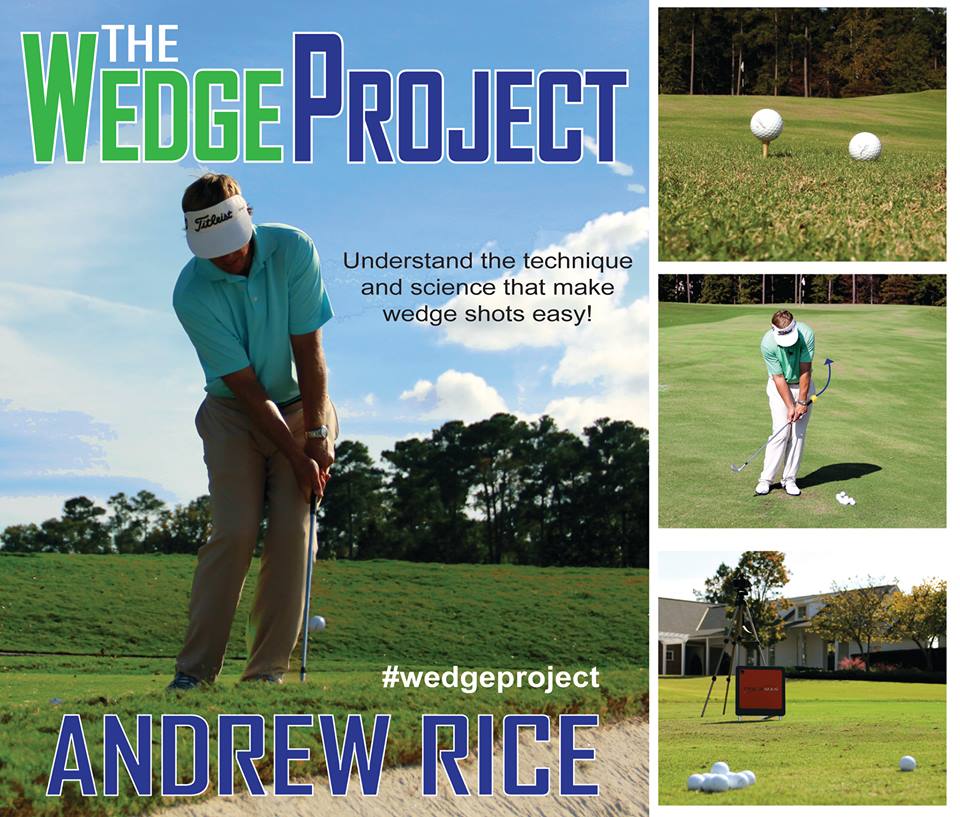To Mill or Not to Mill?
/My three test subjects...
I must be honest and write that I did this test in the hopes of proving a few people wrong. Instead, I have proven myself wrong. With my research for the Wedge Project I put my "stake in the ground" on what I believed regarding milling on the clubface. All the tests I performed using TrackMan and various wedges always showed that a wedge without a milled face generated less spin (albeit slightly) than wedges with the fine "corduroy" look of milling between the grooves.
I looked up a person I believe to be very knowledgeable when it comes to equipment, Tom Wishon. I read all that he had to say on the matter of grooves and surface roughness and his findings aligned with the results I was seeing in my tests.
Based on what I had available to me I had done my homework and had placed my "stake in the sand" in favor of milling on the clubface. It just made sense to me. Until this....
David Neville and the crew from Vokey Wedges have been kind enough to let me have access to a few test wedges. They sent me six wedges of which I chose to use three for this test.
No grooves and no milling
No grooves and milling
All three wedges have the same grip, shaft (DG S200), length, grind (M) and a stated loft of 56 degrees. I did not check their weight, actual loft, lie angle or bounce measurements. I hit 60 shots off a mat (to eliminate ground interference) with the no groove, no milling club and 60 shots off a mat with the no groove, milled club. I then eliminated the 15 lowest spinning shots to leave the remaining 45 highest spinning shots with each club. I used slightly used ProV1X balls and attempted to carry each shot 50 yards. I wiped or cleaned the clubface between every 3rd or 4th shot. Here are the results:
Titleist SM4 TVD M 56 degree Chrome Fly Cut without Grooves or Milling
Titleist SM5 56.10 M 56 degree Raw Surface without Grooves/Milling Only
As you can see the club that had surface milling or roughness actually generated less spin - 6009 RPM to 6229 RPM. While the difference between the two is negligible and most golfers would have a hard time telling the difference between the ball flight of one versus the other (myself included), the result is significant to me in that I firmly believed the outcome would be reversed.
Keep in mind this is a test involving one golfer hitting a limited number of shots to one distance. The results might be a slightly different with multiple golfers at different distances, but I don't believe different enough to sway the outcome of this test.
I recently posted this quote by Martin Palmer on Twitter: "The secret to mastery in any field is to forever be a student." Today my "stake in the sand" moved - I was a student and I learned something. I think it is vital as a coach, or even as a golfer, to place your "stake in the sand" and firmly believe in a method, approach or theory. Stand by it and argue in its favor. That is, until you uncover sound evidence or reasoning against your viewpoint - then you pick up your stake, admit you were wrong and adjust your approach.
As a point of interest I wanted to see how a standard clubface might interact with the ball. I hit 25 shots (keeping the best 20) with the Titleist SM4 TVD M grind that has 17 standard grooves and a milled face. Here are those results:
Titleist SM4 TVD M 56 degree Black Oxide 17 Grooves with Surface Milling
As you can see this clubface with both grooves and surface roughness generated the highest spin rates of all three clubs. This leads me to believe that grooves play a larger, more important role on cleanly struck shots than I originally thought.
As I continue to learn and work towards providing my students with what I believe to be the best current information and knowledge available I know that I will continue to be wrong. The blessing is that each time I am wrong I will learn, adjust and be less wrong than I was before.








